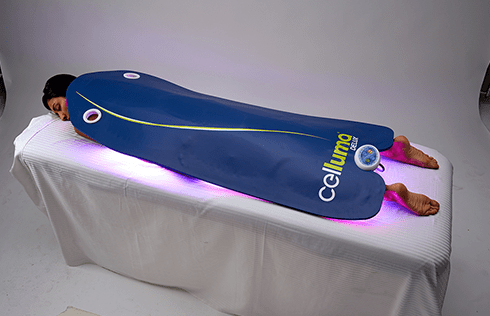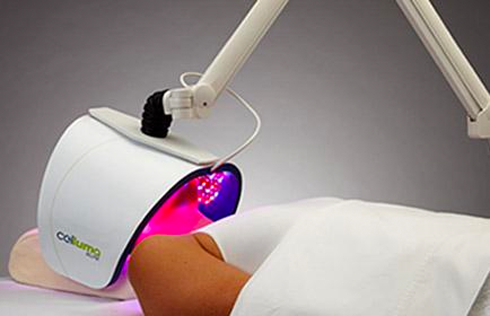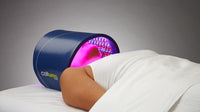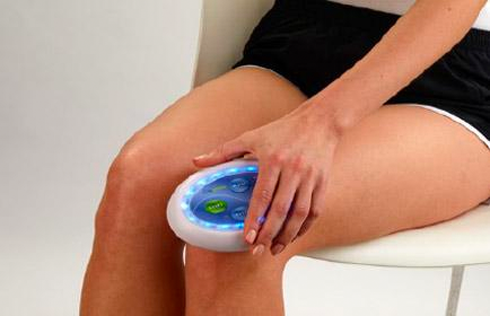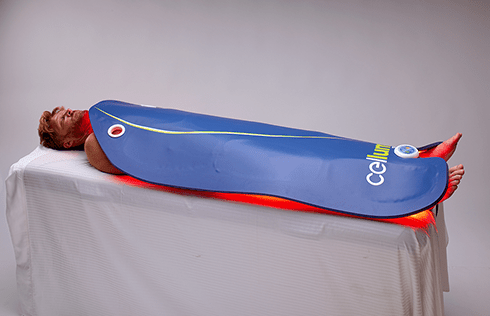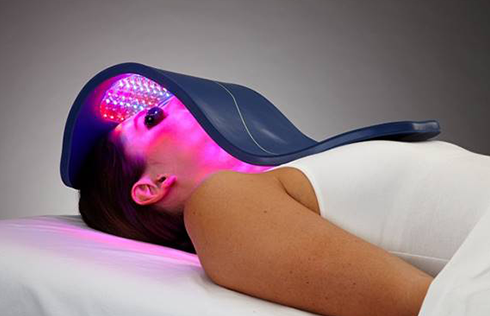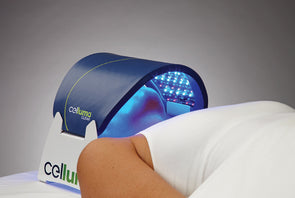FDA-Cleared vs. FDA-Approved : What's the Difference?

If you have ever wondered about the difference between FDA-Cleared versus FDA-Approved LED light therapy devices, then read on for a full explanation and learn why this difference matters. This key distinction can help you make informed buying decisions when looking at purchasing any medical device.
What is the FDA?
The Food and Drug Administration (FDA) is an agency within the U.S. Department of Health and Human Services (HHS). It consists of the Office of the Commissioner and four directorates overseeing the core functions of the agency: Medical Products and Tobacco, Foods and Veterinary Medicine, Global Regulatory Operations and Policy, and Operations. FDA is responsible for protecting the public health by assuring safety and effectiveness.
The FDA (Food and Drug Administration) regulates all medical claims made by device manufacturers regarding their products. The Agency uses two different processes based on comparative risk for reviewing medical claims before manufacturers are permitted to make those claims commercially.
Buyer Beware
For example, if you are looking to purchase an LED red light therapy device for the treatment of acne, wrinkles, pain, or just improve your skin tone and texture, you want to make sure you are purchasing a device that has been thoroughly vetted for safety and efficacy, right?
The 510(k) Process
The 510 (k) process is intended to review devices that are better understood by the Agency and/or potentially less hazardous to patients, like Celluma red light therapy devices. This process is most often used to review Class II devices. This is a less burdensome review process and if the Agency concludes that the manufacture has demonstrated the device is substantially equivalent to a legally marketed device, the device is “cleared” for commercialization. A device being “cleared” is not a reflection on the efficacy of the device, only an indication of the comparative risk in use.
The Pre-Market Approval (PMA) Process
The Pre-Market Approval (PMA) process is intended for devices not as well known to the Agency and that pose a greater risk to the patient, like implantable devices. An example would be a heart stint. These types of products are considered Class III devices. A PMA is a more burdensome process and if the Agency concludes the manufacturer’s claims are supported using this process, the device is “approved” for commercialization.
Reclassification
As a particular Class III device becomes better known to the FDA, it may be re-classified as a Class II device, meaning any subsequent review of such devices by the Agency will be done using the 510(k) process. Again, a PMA “approval” does not denote the relative efficacy of a device, only the comparative risk of the device in use.
The Distinction
That said, a device “clearance” is not somehow a subordinated “rating” by the FDA in comparison to an “approval.” It is just the favorable conclusion of a different review processes used by the Agency, depending on how common and how risky is the device getting reviewed.
Given that LED red light therapy is a well-known modality of treatment to the FDA, and possesses little to no risk to the user, such devices are subject to 510(k) review and are “cleared” for sale by the FDA. That being the case, a product that is advertised as FDA APPROVED LED LIGHT THERAPY TREATMENT is an incorrect use of the Agency’s nomenclature and a likely indication of false advertising. FDA APPROVED LED LIGHT THERAPY TREATMENT is not a “thing” because LED devices are not reviewed by the FDA using the PMA process.
False Advertising
If you see an advertisement for an FDA APPROVED LED LIGHT THERAPY TREATMENT or a manufacture tells you they sell FDA APPROVED LED LIGHT THERAPY TREATMENT, they either don’t know what they are talking about, they are trying to mislead you, or both. LED light therapy devices are cleared by the FDA, they are not approved. So buyer beware…something purported to be an FDA APPROVED LED LIGHT THERAPY TREATMENT has likely not been subject to any FDA review, because the Agency is very specific as to how reviewed devices are to be advertised.
LED Light Therapy - Does FDA Clearance Matter?
As a skin care professional, does a device’s FDA credentials really make a difference? Isn’t the FDA something doctors deal with? For treating the superficial layers of the skin and dealing with conditions like acne and wrinkles, do devices with FDA credentials work any better than those that don’t? Don’t FDA credentials just make devices more expensive? All great questions for today’s skin care professional.
Efficacy and Safety
The FDA regulates any “medical claims” made by device manufacturers. Accordingly, before any medical claims can be legally made by a device manufacturer, those claims must be reviewed by the FDA for both efficacy and safety. The FDA does not test devices themselves, however they thoroughly analyze the data submitted by manufacturers, or “sponsors” to ensure that the claims being made about the device are substantiated and that users of the products can expect effective and safe performance, relative to the claims.
Rigorous Process
Having a medical device “cleared” by the FDA is a rigorous, time-consuming and expensive process. Medical device manufacturers that pursue FDA-clearance are demonstrating to the public their commitment to providing safe and effective products. Essentially, they are putting their money where their mouth is. As such, devices that are granted FDA-clearance are made by companies who have the public interest in mind and don’t try to circumvent federal regulations in taking their products to market.
Making the Right Choice
By choosing FDA-cleared medical devices you are assured that appropriate regulation and authoritative oversight has been conducted. FDA-clearance means that the device you are purchasing has been confirmed efficacious and safe when used as directed. In order for a medical device to receive FDA-clearance, each component of the device must pass inspection - including each of its sources, suppliers, and manufacturers.
No Accountability
Without FDA regulation, neither the device itself nor its suppliers are held accountable to quality controls or manufacturing standards, resulting in a product that may be considerably less effective and oftentimes significantly less safe than FDA-cleared devices.
U.S. vs Europe
Historically, the regulatory hurdles in Europe have been easier to clear, requiring less specific clinical data, compared to the FDA. However, starting in 2021, the European Medical Device Authorities will be “harmonizing” their registration standards along the lines of the FDA. As such, clearing registration hurdles similar to the FDA is going to be required of all medical devices in Europe. That makes devices already cleared by the FDA likely compliant with the new, more stringent EU registration requirements.
Around the World
Globally, the FDA is viewed as being at the forefront of regulatory standards and regulations, monitoring, compliance, and guidance for the medical device industry. Currently and continually, this is evidenced by a harmonization of international and FDA standards and regulations. FDA's responsibilities extend to the 50 United States, the District of Columbia, Puerto Rico, Guam, the Virgin Islands, American Samoa, and other U.S. territories and possessions.
Different Classes of Devices
In reviewing the safety and efficacy of medical devices, the FDA categorizes devices into three distinct classes: Class I is for devices where no medical claims are made and there is a low risk in using the device. The classic example of a Class I device is a tongue depressor. Class II is for devices for which medical claims are made and there is a moderate risk in using the device. Most devices used by skin care professionals are Class II Devices. The successful FDA review of a Class II devices results in the “FDA-clearance” of the device.
Class III devices are typically “invasive,” resulting in the disruption of vital tissue, including “implantable” devices. The successful FDA review of a Class III devices results in the “FDA-approval” of the device. Accordingly, a skin care professional will likely never use a FDA-approved device and should be very suspicious of anyone claiming that a device for skin care professional is FDA-approved.
No Downside for Your Practice
Using FDA-cleared devices in a skin care business ensures that the device has been rigorously reviewed by the Agency for safety and effectiveness. For example, if a device claims to treat acne, you want to know that the device has been reviewed to make sure that it, in fact, does treat acne and will provide your clients with the results they are looking for. That being the case, you can rest assured that the results being claimed by the manufacturer can be reproduced in your practice. FDA clearance also serves to differentiate you from other skin care clinics in your area and will leave your clients with a greater sense of confidence in your professional choices. Bottom line, there are many advantages to using FDA-cleared devices and no real downside.


